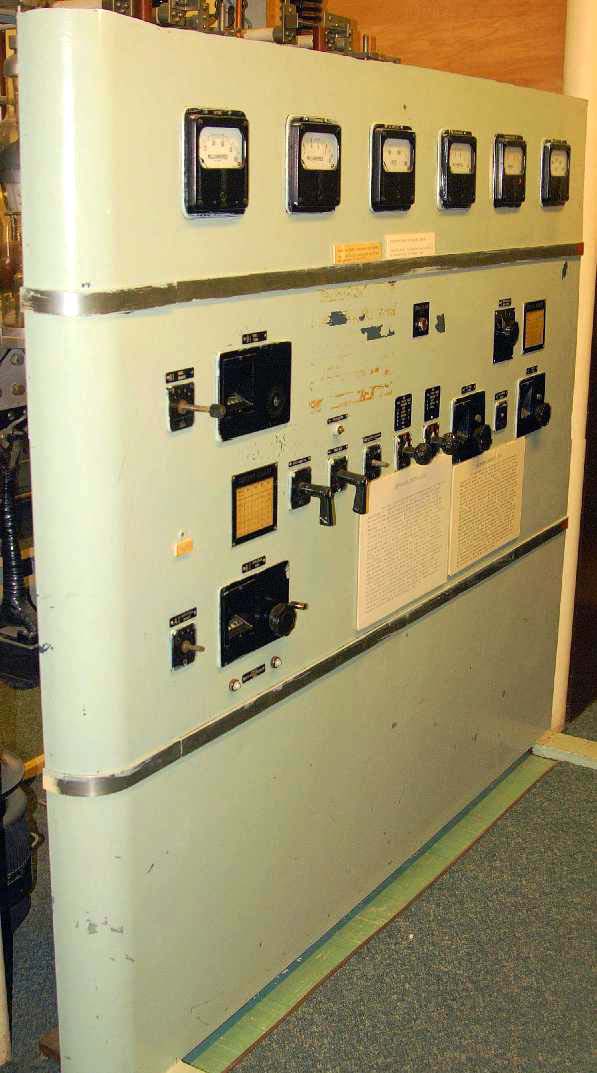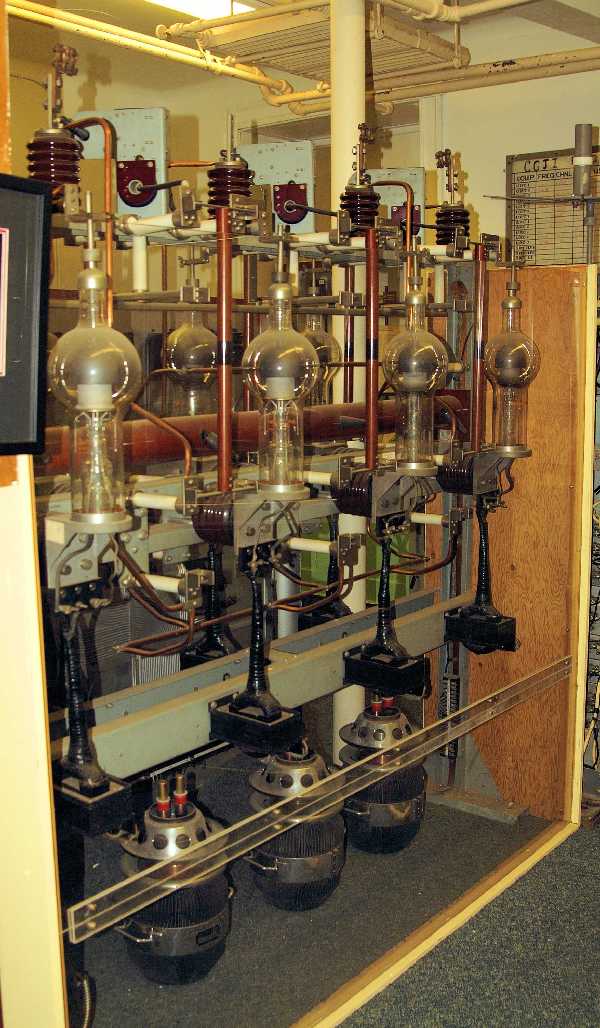The TE-147 was a low frequency transmitter (44 to 150 KHz) which was installed at Naval Radio Station CFH, Newport Corner, near Windsor, Nova Scotia around 1942 and remained in service until the 1970's when it was replaced. An old naval equipment manifest from the 1960's indicates there were two versions of the transmitter.
The TE-147 had a power output of 50,000 to 80,000 watts and could operate in A1, A2 and F1 modes while the upgraded version , namely the TE-147J, had a power output of 250,000 watts. It could operate A1 and F1 modes. Both were controlled by a master oscillator.Edmund A. Laport, an RF engineer who was likely involved with this transmitter, left a typewritten note in his 1971 file which offers some interesting tidbits of information about the TE-147. "The transmitter could be tuned from the front panel, all within a minute. Two were built - one was installed at Newport Corner N.S., for the Royal Canadian Navy; the second was at the Royal Navy base at Simonstown, South Africa. The whole transmitter was designed on paper and final development was to be on site to save time. Under the contract, six months were allowed for site testing but when the big British low frequency station at Rugby was partially destroyed by fire, there was pressure to speed the commissioning of the Canadian station. As a result, the testing and complete proof of performance according to specifications was completed in six weeks. CFH then took over Rugby's 'FOX' broadcasts until Rugby was recommissioned. The transmitter continues in operation though its power has been tripled in post-war years by RCA Victor. In 1956, the TE-147 shipped to South Africa was decommissioned [1]"
The American History Archives provide some background information on Edmund Laport which helps to establish his connection with the TE-147.
"Six months after graduation from Concord, New Hampshire High School in 1920, Edmund A. Laport obtained a commercial first grade radio operator's license from the Department of Commerce in Chicago. The Autumn of 1921 found him as a radio operator at KDKF in New York City. However, due to lack of funds this station closed shortly after he arrived. In December of 1921, he moved to the New York Service Department of Westinghouse installing radio receivers.
On January 2, 1923 he joined General Electric and was made laboratory assistant to I.F. Byrnes, who was in charge of low-power transmitter design. However, Laport decided he wanted to be a forest ranger and left in July of 1923 and headed back to the woods of New Hampshire. In early 1924 Laport began working in Montana as a forest ranger. Within a very short time, however, he realized that he was more interested in radio. Before the year was out, he returned to Westinghouse where he worked largely on high power transmitters until the Spring of 1933. On one assignment he traveled to Peking, China where he helped build three short-wave broadcasting stations.
The depression proved difficult for fledgling radio companies with many going out of business shortly after opening up. Laport worked for one of these unfortunate firms before settling in at Wired Radio, Inc. in Newark, New Jersey. Here he gained invaluable experience helping to develop equipment for commercial program transmission over power distribution systems.
In May of 1936 he joined RCA in Camden, New Jersey where he headed up the formation of their first high-power transmitter operation. He stayed with RCA until he retired in 1967. In December of 1938 he moved to Montreal where he helped RCA Victor Co., Ltd. start the development and manufacture of military and professional equipment. He organized engineering and manufacturing facilities and trained personnel. He also took a role in leading the company in developing aviation navigational equipment.
In July, 1944 he returned to the United States to become chief engineer of the newly formed RCA International Division. Over the next ten years he traveled widely, undertaking many important field construction projects, and consulted with other governments in communications, broadcasting, aviation, and marine matters.
Edmund A. Laport was a director of broadcast engineering for the Radio Corporation of America. From 1954 until 1967 he worked with others in a corporate level engineering consulting group to coordinate work in the many RCA plants in all aspects of communications. He authored, Radio Antenna Engineering, which was published by McGraw-Hill in 1952".
SURVIVING TE-147 PIECES AT THE MARCOM MUSEUM , HALIFAX
 |
| This is just part of the front panel believed to be from the TE-147(J?) transmitter. It has a very close resemblance to the left side of the TE-147 transmitter depicted in the photo table above. The chrome trim matches perfectly. A placard in the MARCOM Museum says its a power supply but this is questionable. One of the meters measuring the cathode current of the driver stage is calibrated in amps. Now that's some serious current! (Photo by Sandy McClearn) |
 |
| This is a mockup of something salvaged from the TE-147-J, perhaps the elements of the power output stage. The actual cabinet is not there and one of final output tubes is missing. In 1970, the cost of one a replacement tube was around $3,500. (Photo by Sandy McClearn) |
FOOTNOTES:[1] A placard at the MARCOM Museum in Halifax seems to offer a different version about the TE-147 destined for South Africa. According to the museum, the ship transporting the TE-147 to South Africa was torpedoed mid-Atlantic between South America and South Africa.
Material Contributors:1) Sandy McClearn <smcclearn(at)gmail.com>
2) The American History Archive web page <http://americanhistory.si.edu/archives/d8016.htm>
May 19/07